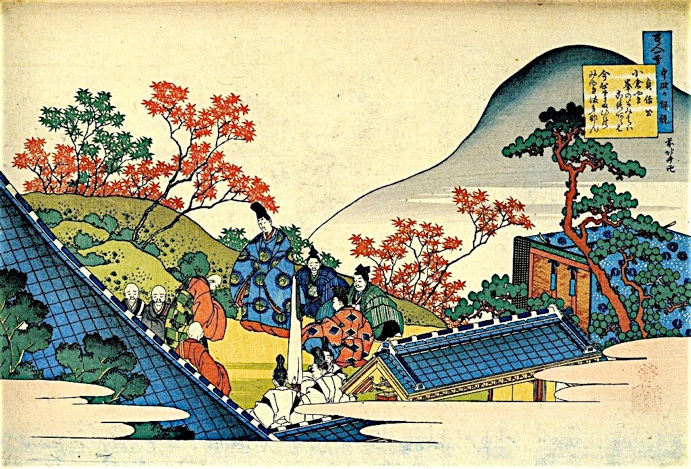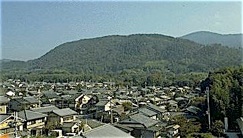貞信公


小倉山
峰のもみぢ葉
心あらば
今ひとたびの
みゆき待たなむ
ていしんこう
をぐらやま
みねのもみじば
こころあらば
いまひとたびの
みゆきまたなん
Fujiwara no Tadahira
If the maple leaves
On Ogura Mountain ridge
Only had a heart,
They would in unison await
The emperor's journey.
Fujiwara no Tadahira (880 - 949), also known as Teishinko, was a kuge (court noble) who served as regent under emperor Suzaku who ruled from 930 to 946. In 909 he took control of the Fujiwara clan and the country after his eldest brother died. He was also known as Teishin Ko (his posthumous name) and Ko-Ichijo Dono. He has several poems in the Gosenshu.
Emperor Uda (reigned 888 to 897) had abdicated and became a monk. He was so impressed by Mount Ogura in autumn that he asked Tadahira to convince his (Uda’s) son Daigo, then emperor, to visit the mountain. This poem is Tadahira’s invitation to Daigo. We find this event also decribed in the Tales of Yamato.
Mount Ogura is also the place where Teika lived and compiled this collection of the Hyakunin Isshu, which is fully known as the Ogura Hyakunin Isshu.
On Hokusai’s woodcut we see the ceremony of invitation to the emperor. The pine tree (matsu) is symbolic for the waiting (matanan being a contraction of matsu naran, ‘the need to wait’). Hitotabi also means ‘one tone’ and can combine with naru in its meaning of ‘to sound, echo’.
Mt. Ogura (286 metres high) lies north of the Oi (now Katsura) River.
Hokusai



Mt. Ogura
